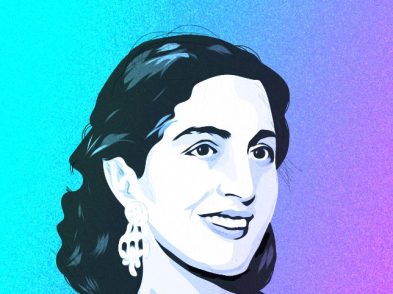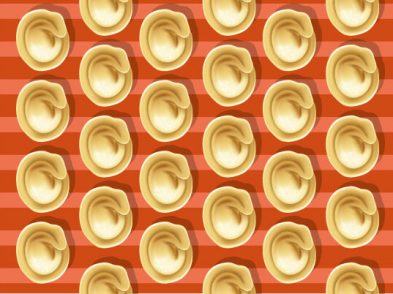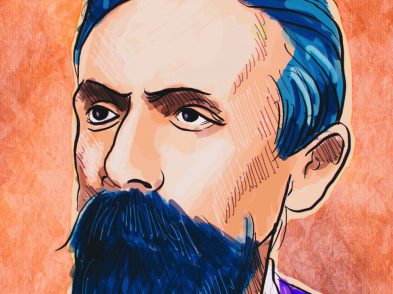On December 10, 1942, a
dinner at the Waldorf-Astoria Hotel in Manhattan replaced the annual
Nobel Prize award ceremony in Stockholm, which had been suspended in
1939 because of World War II. Eleven of the 28 laureates then living
in the United States attended. Most of them had fled Europe to escape
Hitler and had become vital to the Allied war effort. One of them was
Enrico Fermi, the Italian physicist known as the ‘father of the
atomic bomb.’
The
son of a railway employee, Fermi was born in Rome on September 29,
1901. As a teenager, he became fascinated by mathematics, having
bought two books in Latin on the subject at a street stall. Guided in
his studies by an engineer friend of his father’s who recognised
the boy’s extraordinary intelligence, Fermi won a place at the
prestigious Scuola Normale Superiore in Pisa and graduated in physics
from there in 1922. For the next two years, he taught at the
University of Florence and then became professor of theoretical
physics in Rome. For his research there, focused on neutron
behaviour, he won the Nobel Prize in physics in 1938. Concerned
because the Fascists had recently passed anti-Semitic laws in Italy,
after accepting his award in Sweden, Fermi, together with with his
Jewish wife and two children, escaped to the United States. There, he
continued his experiments on nuclear fission as a professor of
physics at Columbia University in New York where he and his colleague
Leo Szilard co-invented the first small nuclear reactor, which Fermi
dubbed the ‘pile.’
Realising both the
potential of an atomic bomb to bring the war to a close and the
catastrophic outcome if the Germans developed it first, the US
government poured 2 billion U.S. dollars into the bomb’s
development. Fermi was appointed head of the Manhattan Project at the
University of Chicago, where, on December 2, 1942, he and his team
produced the first nuclear chain reaction from the full-scale nuclear
‘pile’ they had built in a squash court under the stands of the
university’s football stadium. From that moment on, the
construction of the bomb was merely a matter of assemblage. To
celebrate, Fermi opened a bottle of Chianti, drinking it together
with his fellow scientists from paper cups.
In 1944, the project was
moved to a desolate area in the American Southwest, Los Alamos in New
Mexico, and on July 16, 1945, the first atomic bomb was detonated in
the desert at Alamogordo Air Base. Less than a month later, President
Truman announced that an atomic bomb had exploded over Hiroshima, its
devastating consequences only becoming fully apparent some time
later. It was soon followed by another bomb, again dropped on Japan,
this time at Nagasaki.
A dark-haired man of
average height with piecing grey-blue eyes and a resolute manner,
Fermi was not always easy to work with. Because he was seemingly
infallible, he was nicknamed ‘the pope’ by his fellow emigré
colleagues, Hungarians Szilard, Eugene Wigner, John von Neumann and
Edward Teller, whom Fermi called ‘the Martians’ because of their
superhuman-like minds and their strong accents when they spoke
English, and German Hans Bethe; together they formed the backbone of
the ‘bomb squad.’ Another colleague, Sam Allison said of him,
‘He’s a tougher character [than I] and good at saying no. He
refused to do administrative work. He doesn’t have a phone and
refused to have a secretary. General Groves [military chief of the
Manhattan Project] hates my guts. But he hates Fermi’s guts worse.’
Not surprisingly, his wife, Laura, painted a softer picture of him in
her book Atoms in the Family,
describing how her husband suffered far more from his shortcomings in
his preferred sports of skiing, swimming and mountain climbing than
from any setbacks in his scientific experiments.
Nonetheless, on that
December day in Chicago in 1942, when Fermi achieved the first
self-sustaining nuclear chain reaction, the world changed forever.
The Atomic Age had begun. It triggered the arms race and the
knowledge that, for the survival of the planet, even an uneasy peace
was better than any prospect of future global warfare.
In fact, the jury is still
out on whether the splitting of the atom brought with it lasting
benefits, and the pro and con nuclear debate continues to rage on.
Supporters maintain that it opened the way to harnessing energy for
peaceful purposes, for example, its use in nuclear power plants.
However, after incidents like the 1986 accident in Chernobyl and
multiple failures in the reactors at Fukushima following the recent
Japanese earthquake and tsunami, adversaries say its disadvantages
heavily outweigh its advantages. Still others insist on its merits,
pointing to advanced techniques in nuclear medicine, breakthroughs
that arrived too late to help Fermi, who died, aged 53, of stomach
cancer on November 28, 1954, probably caused by his exposure to
radiation.








